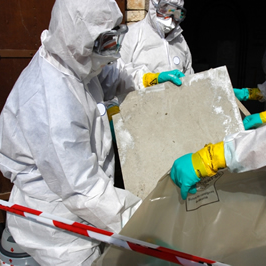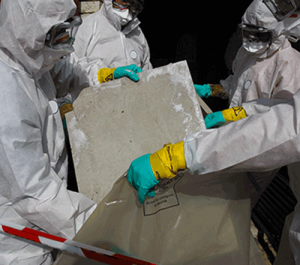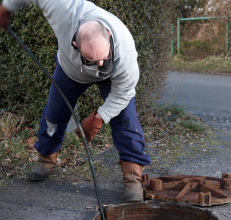
The expression “asbestos” assigns a gathering of normally happening sinewy serpentine or amphibole minerals that have phenomenal elasticity, direct warmth ineffectively, and are moderately impervious to synthetic assault. The essential assortments of asbestos are chrysotile, a serpentine mineral, and crocidolite, amosite, anthophyllite, tremolite, and actinolite, all of which are amphiboles. Asbestos Removal Northampton follows the description mentioned in the theoretical approach.
Chrysotile strands comprise totals of long, dainty, adaptable fibrils that look like parchments or on the other hand chambers of uniform substance organization. Even though chrysotile is a sensibly well-characterized mineral, the five amphibole asbestiform strands have such factor substance syntheses and actual properties that positive recognizable proof is once in a while problematic.
The naturally visible asbestos filaments are heaps of more slender strands comprised of fibrils which, on account of chrysotile, have a width of 20-25 nm. Each naturally visible fiber is profoundly anisotropic and will, in general, disintegrate into its slenderer constituents under mechanical taking care of or from enduring, leading to a stringy, to some degree respirable spray.
Sources

Regular sources are significant because asbestos minerals are broadly spread all through the earth’s hull and are not confined to a couple of mineable stores. Specifically, chrysotile is present in most serpentine stone developments. Discharges are because of normal enduring and can be improved by man’s exercises, for example, quarrying or road building. Very little, notwithstanding, is thought about the sums produced from normal sources.
Man-caused discharges to start from exercises in the accompanying classes:
(a) mining and processing
(b) assembling of items
(c) development exercises
(d) transport and utilization of asbestos-containing items
(e) removal.
Event in air
Asbestos strands of respirable size structure part of a scope of sinewy vapor sprayers in the lower climate. Different strands incorporate man-made mineral filaments, sinewy silica and aluminum oxide, stringy gypsum, and, in some geological regions, sinewy zeolite, attapulgite, sepiolite furthermore, wollastonite.
Once produced into the air, asbestos strands might travel significant distances attributable to their streamlined properties. Since no compound breakdown of the filaments happens, waste of time by downpour or snow is the main cleaning instrument. Asbestos filaments typically comprise just a generally little part of the absolute stringy spray in encompassing air. The naturally more significant purported “basic” strands are those equivalent to or more than 5 μm and having widths up to 3 μm with a viewpoint proportion equivalent to or more noteworthy than 3: 1.
Even though asbestos strands can be promptly recognized and checked in word related circumstances by utilizing stage contrast optical microscopy, their appraisal in the climate requires an incorporated strategy equipped for microchemical examination of single filaments, estimation of fiber length and distance across, and includes of fiber numbers in given air tests. Electron microscopy is the main technique that can distinguish and recognize asbestos filaments among the extremely wide scope of other stringy and nonfibrous particles, of incredibly changing poisonous strength, in the encompassing air. Utilized related to one another, these techniques permit the recognizable proof of tests. In request decidedly to distinguish asbestos strands in ecological encompassing air it is important to utilize chosen region electron diffraction as well as energy-dispersive X-beam diffraction analyzers connected to an electron magnifying lens.



